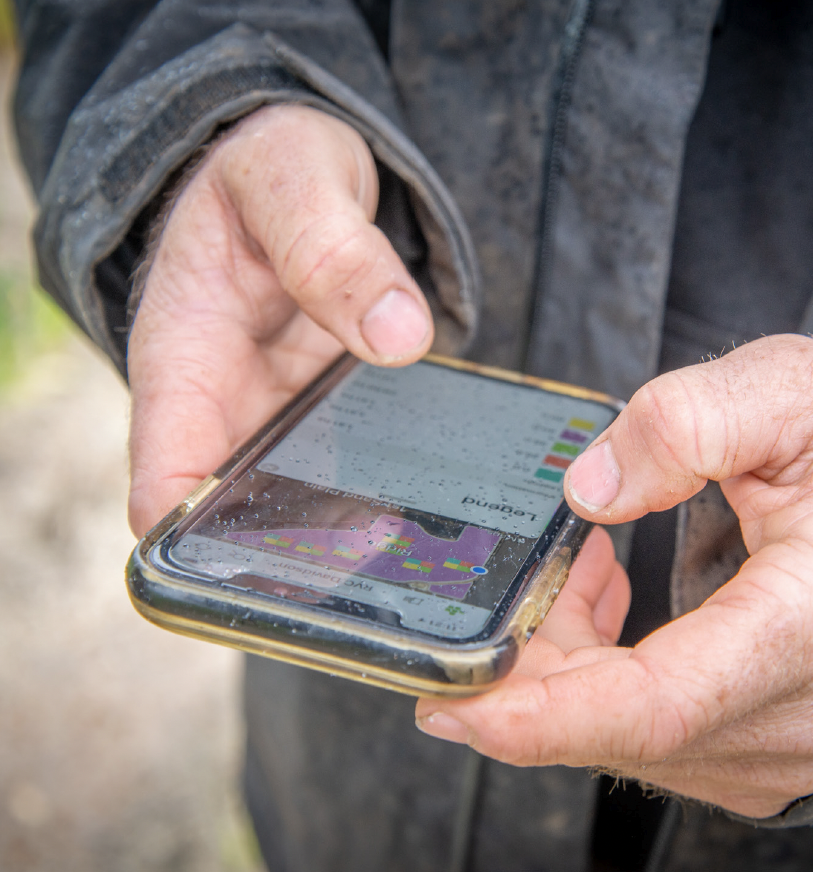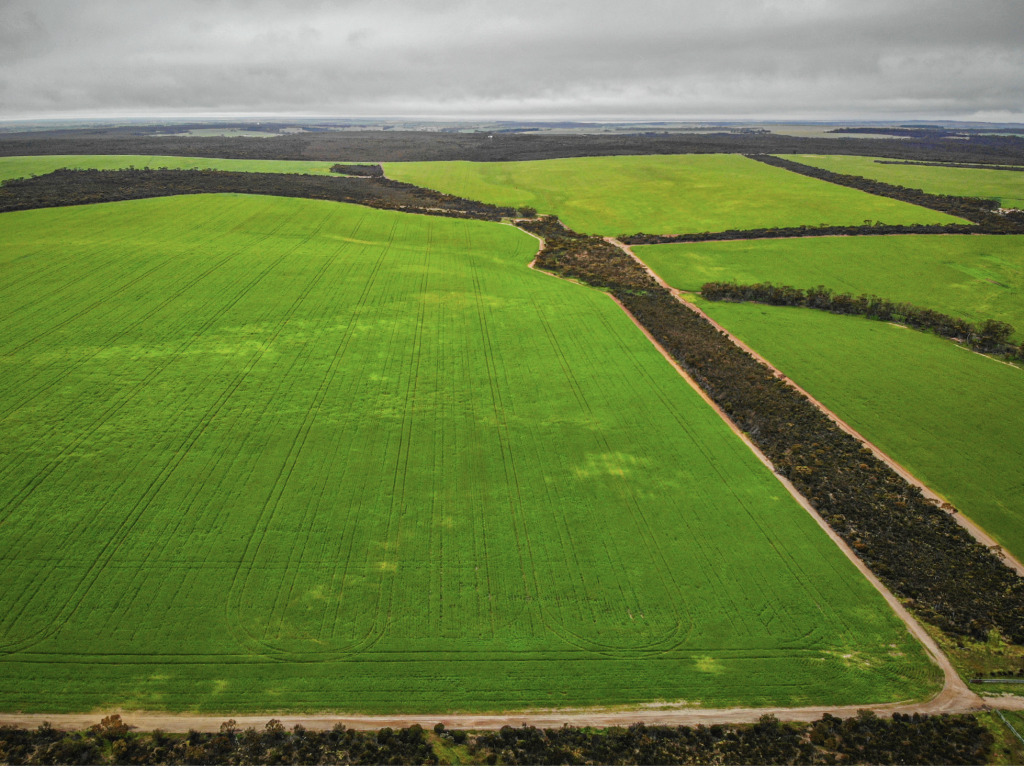4th generation farming family
Chad Davidson is a 4th generation farmer on the family’s 3,000 hectare Kukerin, WA property, where he farms together with his wife Jess and parents Jim and Wendy. 300 hectares are used for the flock of sheep while the rest of the land is cropped in a rotation of barley, wheat, canola and export hay. While many growers rely on economies of scale, growing the size of their operation, to increase profitability, the Davidson family has decided to focus on maximising the returns from their farm at its current size instead.

Working with the principle that ‘you can’t improve what you can’t measure’, Chad decided to adopt Agworld into the family operation in 2012: “We have to create field records for everything that we do on our farm from a compliance perspective, but I figured we might as well do that in such a way that would allow us to utilise these same records for other purposes as well in future if we wanted to. I liked the idea of recording things digitally, but initially Agworld was just that for us: keeping track of what we’re doing in-field.”
Chad continues: “Our agronomist at Kukerin Rural Services, Kim Gooding, now uses Agworld as well, which makes things even easier for us as we can just use the plans and recommendations they create for us anyway and turn them into actuals. Because we have almost 10 years’ worth of information in Agworld now, it really is a valuable tool for me that allows me to look back at what we’ve done in previous seasons and which results we got out of those actions.”
Optimising fertiliser inputs
With rising input costs compressing margins for farmers globally, the Davidson family is always looking at how they can optimise the return on investment for the inputs they apply. As fertiliser is the big ticket item for the Davidson family, they decided to first put their focus on it according to Chad: “We had been applying blanket fertiliser rates up until now, but I know that there is a lot of variability across the farm and so it makes sense to work on targeting our fertiliser spend better so we place it where it has the highest impact.”
Chad elaborates: “We get information from local fertiliser trials through grower groups or industry bodies and they are interesting, but ‘local’ can still be a 100+ kilometers away and quite often the fertiliser ‘response’ is measured by throwing everything and the kitchen sink at a small trial plot. I’m sure that this gives some good data for scientists to develop experiments and theories with, but it’s not much use to us; if I were to suggest applying those kinds of rates on our farm, I’m afraid my dad would just throw the actual kitchen sink at me! With this in mind, we knew that the best solution would be to run replicated trials on our own farm but we also knew that we didn’t have the time or resources like industry bodies do to run these trials ourselves, which is how we ended up adopting Laconik.”
Laconik is a platform that allows growers to create replicated trials to measure actual profit from fertiliser to provide more accurate fertiliser decisions. Through combining data that growers already collect across their farm with machine learning algorithms, Laconik helps growers to ‘put the right rate in the right spot’. Having a platform like Laconik to help create these fertiliser trials is key according to Chad: “I think most growers don’t want to run their own fertiliser trials as they don’t have the time to create the system to do so, which is exactly where Laconik fits in for us: they make it simple to run trials.”
Chad continues: “At the beginning of the season I create my trial plots in Laconik, assign the different rates, and it then automatically creates a shapefile for my fertiliser spreader. Working this way, I’m able to trial a range of different fertiliser treatments throughout our farm; this season alone we’ve got around 1,000 hectares of crops with ‘trial’ rates of fertiliser – nearly half our cropping program!”

Generating results
Through the integration between Agworld and Laconik, Laconik’s trial plot locations and rate details are available in Agworld, which means that any connected advisor with access to a farm’s Agworld account, is able to see the Laconik trial information as well. This allows for accurate monitoring of plots throughout the season through ground truthing and overlaying the different plots with an NDVI layer for example. Then, at the end of the season, growers like Chad will upload their yield data to Laconik so that their proprietary machine learning algorithms can calculate the actual results for each individual trial plot.
Chad concludes with: “By taking our trial program to this level with Laconik and Agworld, we will be able to gain greater insights about profitability and yield from the data captured on the different treatments and the results.
“We had been applying blanket fertiliser rates up until now, but I know that there is a lot of variability across the farm and so it makes sense to work on targeting our fertiliser spend better so we place it where it has the highest impact.”
— Chad Davidson RVC Davidson, Kukerin, WA